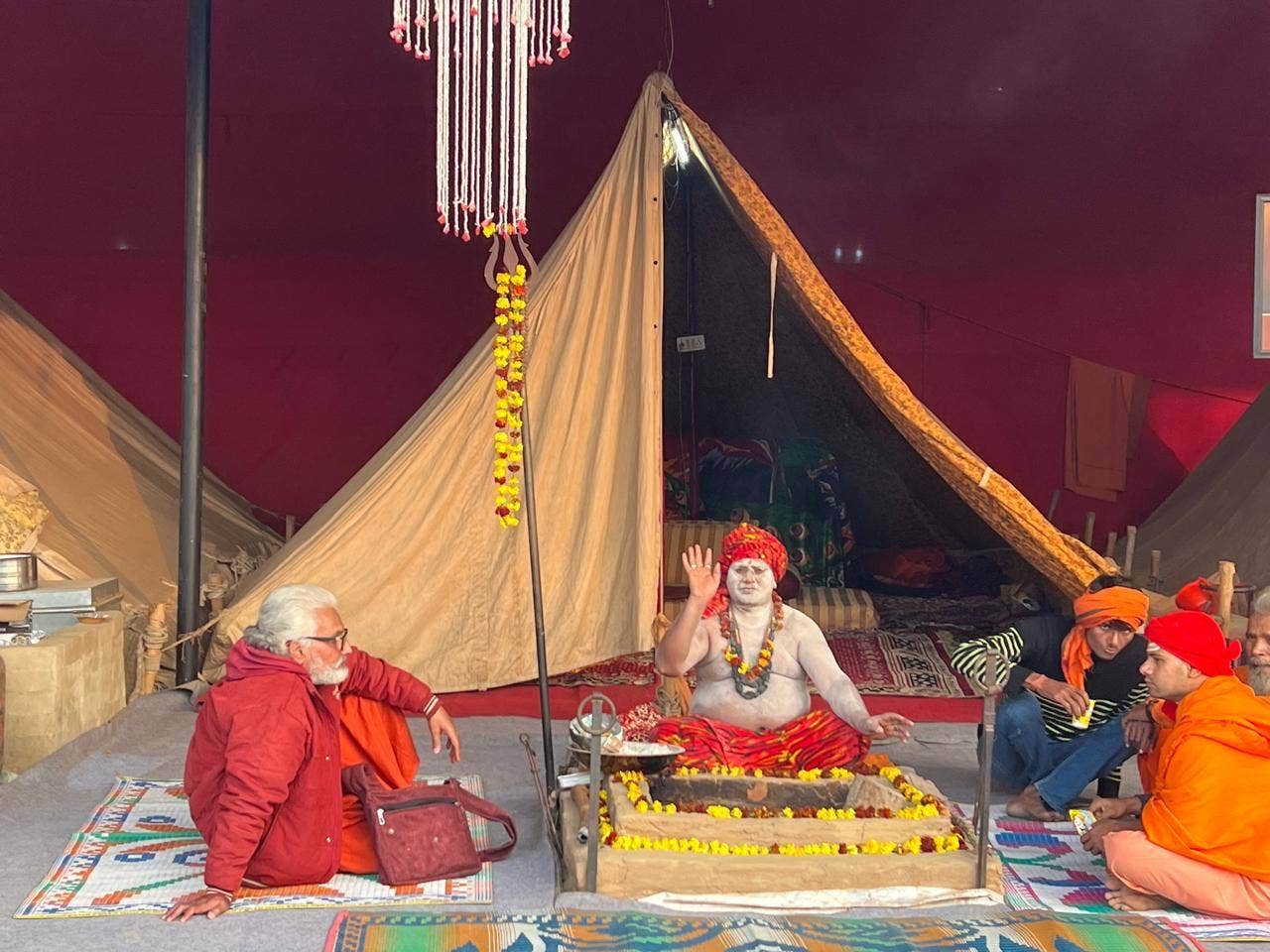World
World’s largest religious gathering in India underway as hundreds of millions visit 45-day festival

The Maha Kumbh Mela: A Spiritual Spectacle of Unparalleled Scale
The Maha Kumbh Mela, often referred to as the Great Pitcher Festival, is one of the most extraordinary and awe-inspiring events in the world. This 45-day spiritual extravaganza, which began on January 13, is the largest human gathering on the planet, attracting an estimated 420 million people. To put that into perspective, it is roughly 200 times larger than the annual Hajj pilgrimage in Mecca and Medina. The sheer size of this event is so vast that it can even be seen from outer space, a testament to its magnitude and significance.
The festival is rooted in Hindu mythology, specifically the legend of the churning of the cosmic ocean by gods and demons in search of the nectar of immortality, known as amrit. During this mythical struggle, drops of the nectar fell onto four sacred sites in India, and the Maha Kumbh Mela is celebrated at one of these locations every 12 years. This year, the festival is being held in Prayagraj, a city in the northern Indian state of Uttar Pradesh. What makes this year’s event even more special is its alignment with a rare, once-in-a-century celestial configuration, drawing even greater crowds and excitement.
The Sacred Waters: A Dip for Salvation
At the heart of the Maha Kumbh Mela is the sacred ritual of taking a dip in the confluence of the Ganges and Yamuna rivers. Hindus believe that a third, invisible river, the mythical Saraswati, also meets at this point, making it a trifecta of spiritual power. The act of bathing in these holy waters is believed to wash away sins and grant salvation. Pilgrims and devotees flock to the riverside at dawn, particularly on the most auspicious dates, to immerse themselves in the sacred waters.
Ava Poonawala, a resident of Mumbai, attended the festival not as a pilgrim but as a spectator eager to witness this historic event. She described her early morning dip as an invigorating and peaceful experience. "Everyone seemed to be there with one purpose," she shared, "and that was spiritual awakening." Her words encapsulate the shared sense of devotion and unity that pervades the festival.
A City Built for Millions: The Logistics of a Mega Event
The Maha Kumbh Mela is not just a religious event but also a monumental logistical undertaking. To accommodate the tens of thousands of holy men, pilgrims, and tourists, a sprawling tent city has been erected along the riverbanks. This temporary metropolis boasts over 150,000 tents, 3,000 kitchens, 11 hospitals, and a network of roads, electricity, water supply, and communication towers. The sheer scale of the setup is staggering, covering an area of approximately 15 square miles.
To maintain order and manage the massive crowds, 50,000 security personnel have been deployed, supported by artificial intelligence-powered cameras. Ava Poonawala summed up her experience of the festival’s infrastructure, saying, "I was blown away by the incredible magnitude of this event. It’s just unimaginable how they put this all together." The organization and planning required to host such a mega event are indeed a marvel in themselves.
Tragedy Strikes: A Stampede Claims Lives
Amid the joy and spiritual fervor, tragedy struck when a predawn stampede broke out during one of the most auspicious days of the festival. The stampede, which occurred as hundreds of millions of pilgrims rushed to bathe in the sacred waters, resulted in the deaths of at least 30 people and injured many more. Prime Minister Narendra Modi offered his condolences, while Uttar Pradesh’s chief minister attributed the incident to severe overcrowding and devotees attempting to jump over crowd management barricades.
The stampede was not the only challenge the festival faced. Earlier, a fire had broken out but was quickly extinguished, and the grand processions were temporarily halted as a precautionary measure. Despite these incidents, the festival continued, showcasing the resilience and determination of the organizers and participants alike.
A Cultural Extravaganza: Unity in Diversity
The Maha Kumbh Mela is more than just a religious gathering; it is a vibrant celebration of Indian culture and spirituality. The festival attracts a diverse crowd, from ash-smeared Naga Sadhus (Hindu ascetics) and saffron-robed priests to tourists armed with selfie sticks and curious foreigners. This year, the Uttar Pradesh government has gone the extra mile to promote the festival as a tourist event, offering luxury packages and even organizing helicopters to shower flower petals on saints and pilgrims during their holy dips.
The festival’s appeal extends to people from all walks of life, including celebrities, athletes, and even royalty. Billionaires like Laurene Powell Jobs, Olympic boxer Mary Kom, Bollywood stars, and international figures like Coldplay’s Chris Martin and actress Dakota Johnson have all been drawn to the event. King Jigme Khesar Namgyel Wangchuck of Bhutan also made an appearance, while Prime Minister Modi himself took a sacred dip a week after the stampede. This year’s festival has also made history as the first-ever plastic-free and eco-friendly Kumbh Mela, reflecting India’s commitment to sustainable tourism and environmental conservation.
A Celebration of Spirituality and Unity
The Maha Kumbh Mela is a testament to the power of faith and the enduring appeal of spiritual traditions. Over the years, the festival has grown in size and popularity, thanks to improved infrastructure and facilities that cater to the millions who attend. For many, the festival is a once-in-a-lifetime opportunity to experience a cultural and spiritual phenomenon that transcends borders and backgrounds.
Ava Poonawala encapsulated the essence of the festival when she described it as "so surreal with such purity. I can’t even begin to explain it." Her words capture the awe-inspiring and deeply moving nature of the Maha Kumbh Mela, which is as much a celebration of humanity as it is a spiritual pilgrimage. The festival is a reminder of the enduring strength of faith, the beauty of cultural diversity, and the extraordinary feats of human organization and resilience.